Inquivix HQ
1-903, 18 Eonju-ro 146-gil,
Gangnam-gu, Seoul, Korea
06057
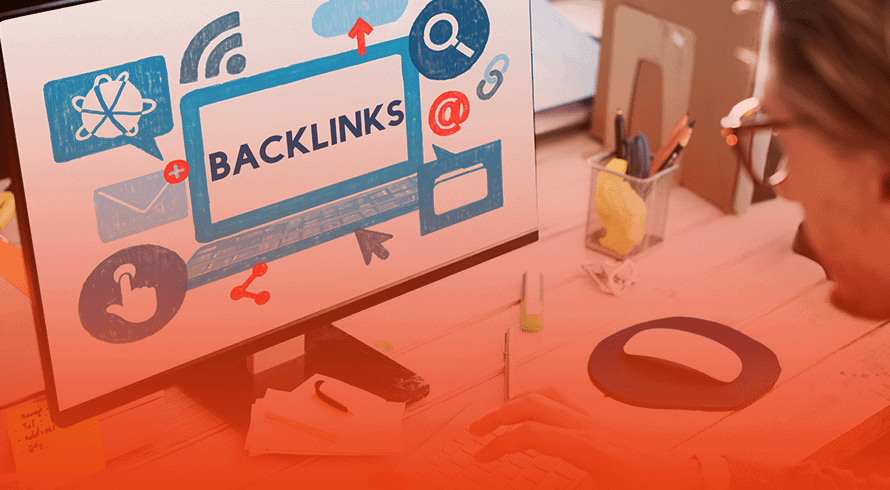
In the modern digital marketing world, backlinks are important for your website’s performance on search engines. They are the links from other websites that lead to your website. Since they bring traffic to your site from another website, they are also known as ‘inbound links’, ‘incoming links’, or ‘one-way links. The quality and the number of links to your site will improve your search engine ranking.
However, everything comes in pairs of good and bad. So do backlinks. As there are good backlinks that improve your site’s credibility, there are bad backlinks that can harm your site’s performance. That is why implementing a strong backlink audit should be one of the main steps in your link-building strategy.
What to Know About Backlink Audit?
Your website might suddenly take a drop in the rankings no matter how optimized your content is. Then it is time to run a backlink audit. With a high amount of referring domains, your organic search traffic should increase, but sometimes it does not work exactly like that.
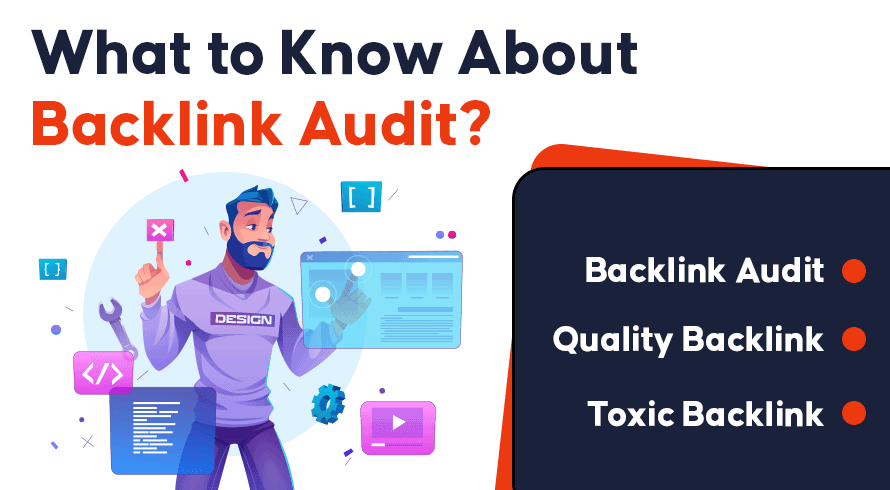
The quality of your backlinks plays a role in your SERP rankings. There are quality backlinks as well as toxic backlinks. Knowing which is important for your site’s SEO. Therefore, you need to regularly run backlink audits and clean them up. Using a backlink analysis tool will help you to easily conduct a complete link audit.
Backlink Audit
Time to see what the website you are linking to is all about. You need to locate all the links pointing to your website. Then identify which ones are harmful links, and which are good for your site. At times, you might forget about them but what you fail to realize is that Google actually looks at each and every one of them. Failure to do so would affect your rankings a lot.
Quality Backlink
A quality backlink is when it comes from a website with high domain authority. Search engine spiders, as well as web users, will trust a high. When a user sees a link to your site on a trusted site, it is a recommendation for your site. Therefore you need to make sure that your referring domain is with high authority.
Toxic Backlink
Google search algorithm is capable of identifying toxic backlinks. It will notice if you have spammy backlinks or dead backlinks. A basic backlink audit will help you identify these kinds of links.
Backlinks and Google Penalties
Google is one of the largest search engines in the world. If you are targeting an international audience, you should be aware of the penalties Google hang out for bad backlinks. Here’s how Google penalizes you for backlinks.
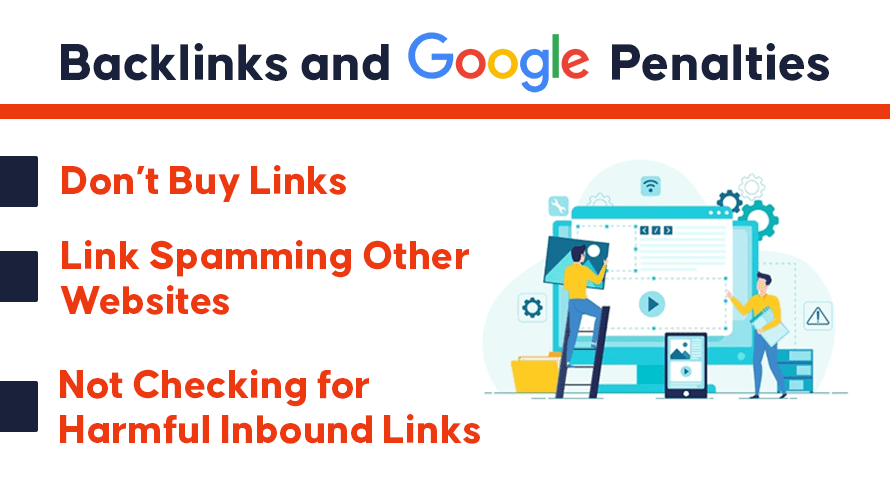
Don’t Buy Links
As much as you want to believe the opposite, Google will immediately catch those who buy links. Hence, better not even think about it if you want to be good friends with Google. No matter how good the sales pitch of the company selling links is, you better not fall for it or you will suffer in the end.
Link Spamming Other Websites
When you post replies to other websites, it would not be such a good idea to put too many links in there. Google will be quick to take notice of that and your links will become meaningless in no time. These spammy links will lead Google to penalize your site.
Not Checking for Harmful Inbound Links
Make sure that your inbound links are from legitimate and credible sources. Otherwise, Google would list your site as suspicious too. Your backlink audit should monitor for low-quality backlinks.
How to Detect Link Penalties?
Your backlinks can come with or without your knowledge. Without constant monitoring, you will not be able to keep track of your backlink profile. Keeping an eye on the backlinks pointing to your website will help you to monitor them and avoid search engine penalties.
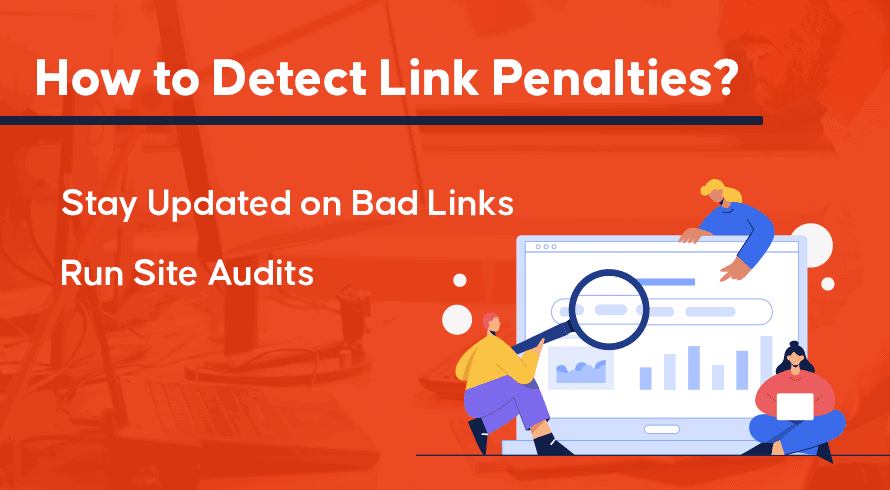
Stay Updated on Bad Links
If you don’t have a link penalty tool right now then you must get one as soon as possible. Besides, that would help you determine the good links from the bad ones. Yes, better take advantage of the recent advancements in technology.
Run Site Audits
Check all the domains linking to your website in order to find out whether you have bad links or not. Keep in mind some articles can be pretty long so it may take you too long to find the ones that need to be found. Some of them may not have been found the first time around.
How Do You Deal With Toxic Backlinks?
Don’t get stressed when these toxic backlinks happen because it happens to the best of us. Just have the right attitude, a clear mind, and deal with them. Make sure that you get rid of them and no trace of these things would exist.
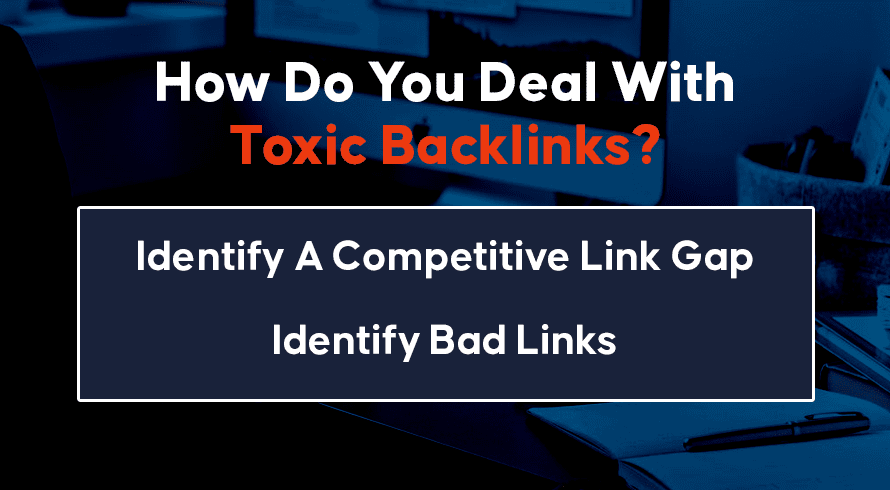
Identify A Competitive Link Gap
A backlink audit will help you identify the link gap between you and your competitors. By identifying the differences in the backlink profile, you can develop strategies to improve and close the backlink gap.
Identify Bad Links
This is when the links go to websites or pages that haven’t been updated in some time. The links are just there for the sake of giving links but when you go to them, either they are old or do not exist. Identify if you have any dead backlinks that lead nowhere and correct them. Reach out to the referring domains that used the dead backlink, and lead them to a recent or updated page on your site. It would be better if the linking page is useful and helps out the visitor.
How Do You Know If You Have Toxic Backlinks?
Toxic backlinks can affect your overall SEO. Knowing whether you have toxic backlinks is the first step in rectifying that. One way to do it is with the Google search console. If you have any backlink penalties from Google they would appear on the Google search console under “Security and Manual Actions > Manual Actions”. If you have any pending penalties here, you can take action to review and fix them.
Another way to learn whether you have toxic backlinks is to use an SEO site audit tool. This is more convenient if you have multiple sites to keep track of. Most of the SEO tools can be automated to run regular backlink audits.
How Do I Remove a Toxic Link from My Website?
Once you have run an audit and analyzed the backlink data, the next step is to improve your backlink profile. Here’s what you can do to improve your backlinks.
Step 1 – Build a Remove List
Your backlinks report would have a list of broken links, dead links, spammy links, and other toxic links. There may be a lot but you have to get rid of all of them right away. You can try fixing dead backlinks, but sometimes removing them would be more cost-effective.
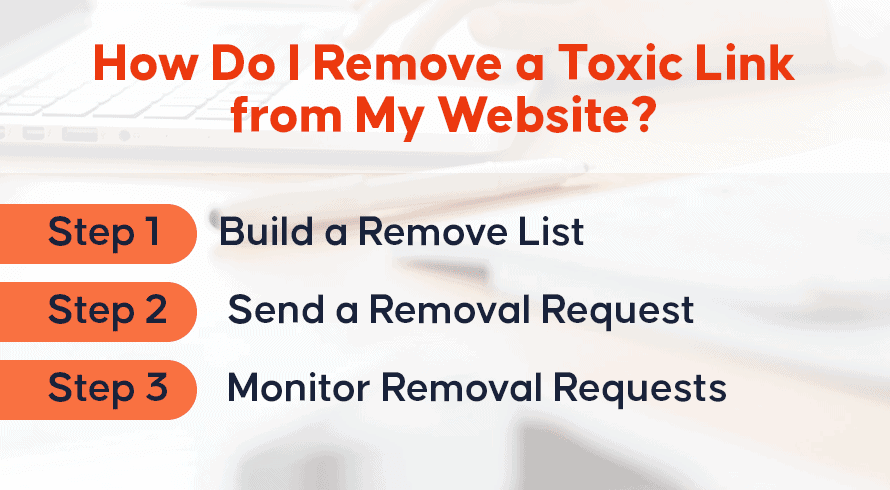
Step 2 – Send a Removal Request
Just when you thought it could not get any easier, all you need to do is to send a removal request and they will get to it right away. As a matter of fact, you should be used to this by now. Of course, you need to make sure you gathered the right links because there would be no going back when you already send them the request. Besides, they have a lot of requests to get to.
Step 3 – Monitor Removal Requests
Better monitor what happens to your removal requests from time to time. After all, there are too many that not all of them can get done at the right time. It is one of those steps that need to be done as soon as possible since your removal list contains tons of links so you better be patient as it will eventually get done.
Conclusion
Every business should have and use a good link-building strategy, but it should incorporate steps to conduct backlink audits regularly. Since the Google algorithm considers backlinks to be of considerable importance for search rankings, your link building should be very well optimized. Getting rid of toxic backlinks will increase your ranking on SERPs and your site’s credibility.
